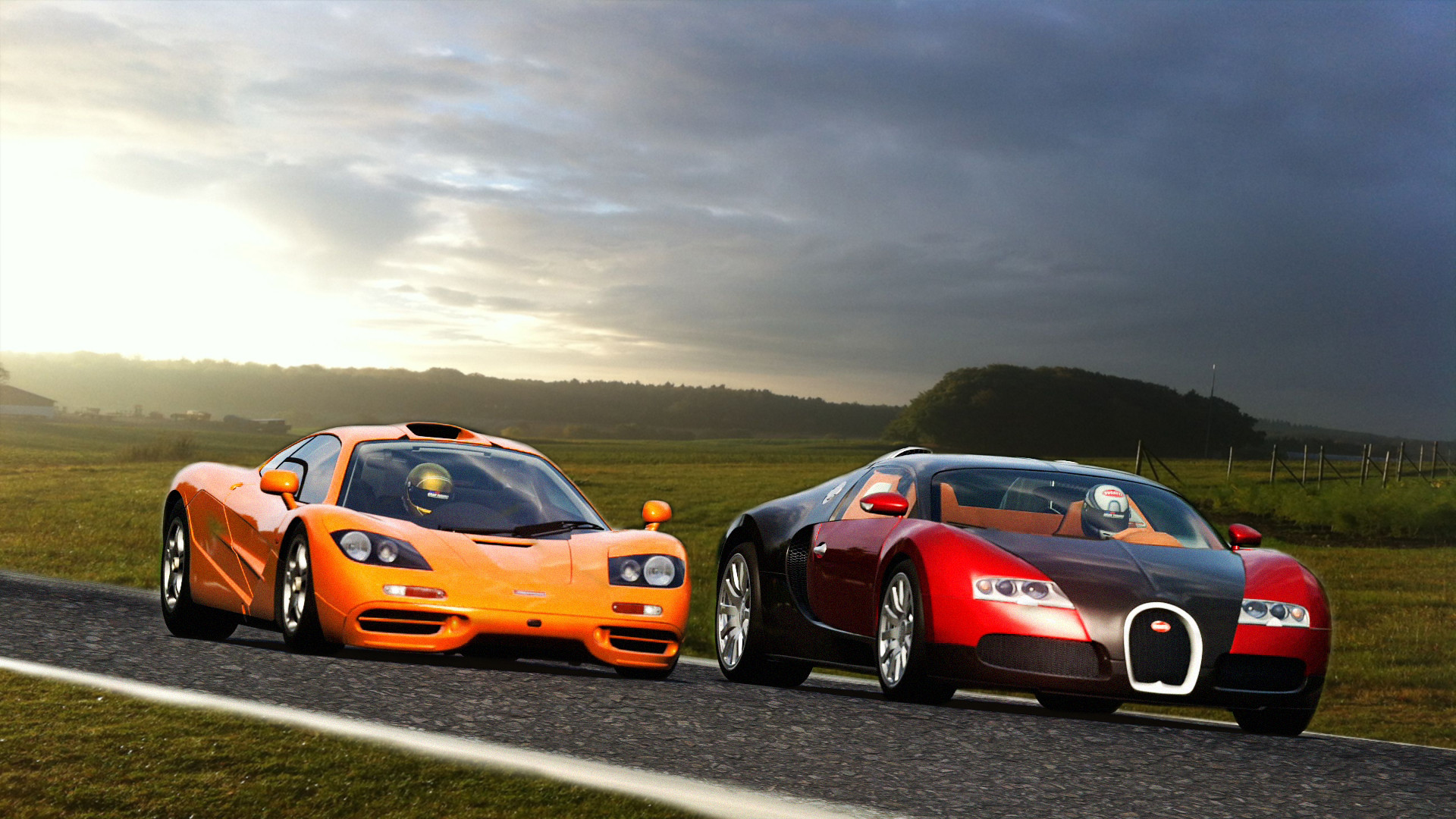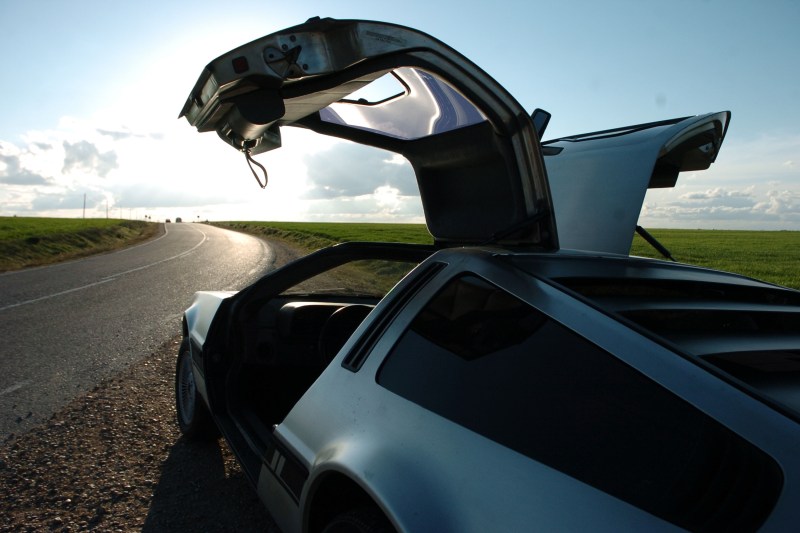
The Tesla Cybertruck has caused controversy in a few ways. Its announcement was a bit of a disaster, with a lightly thrown steel ball shattering two of its supposedly “bulletproof” windows. Production has been delayed numerous times, with everything from a chip shortage to horrendous quality control issues being to blame. And its looks have proved divisive, with some praising its daringness like a hideous child’s mother would compliment their personality — while others point out it looks horrendous.
While you can’t argue its appearance is “unique,” outside of the world of low-poly count video games anyway, rolling the dice in terms of appearance is nothing new in the automotive world. The difference is that risk has paid off for other manufacturers because their cars actually looked appealing. Even the Cybertruck’s attempts at looking retro-futuristic aren’t anything novel. There are decades-old “futuristic” cars that look far out and are generally better than Tesla’s electric pickup. Here are five classic cars that have the Cybertruck beat.

The Aston Martin Lagonda
Following its launch at the 1976 London Motor Show, the Aston Martin Lagonda faced similar looks-related criticism to the Cybertruck. It was a stark departure from Aston’s previous styling and cost an absolute bomb to boot. However, despite dividing opinions to this day, it has a large and dedicated following of enthusiasts who either own one of the classics or wish they did.
Its enormous, tapering bonnet is closer to the silhouette of a spaceship than it is to a late 1970s luxury car. Its interior was also incredibly luxurious, so it beats Tesla’s effort in that department, too. Despite the hefty price tag, the Lagonda sold well and was in production until 1990. You can still find examples in good condition today but expect to part with some serious cash if you want to own one. Anything south of $80,000 in good nick can be considered a deal in the current market. Its wedge-shaped styling was parallel in many of its contemporaries, including the Lamborghini Countach and another iconic 1980s wedge.

DeLorean DMC 12
While its starring role in what is arguably the greatest film trilogy of all time may have done more for its reputation in the long term. The DeLorean DMC 12’s unique styling and material choices are what got it there in the first place. There’s a strong suggestion that the hard lines and stainless steel bodywork of the Cybertruck have been stolen directly from this 1980s classic.
However, the DeLorian’s angular shapes are actually aesthetically pleasing — even when your version lacks a Flux Capacitor. The DMC 12 is so futuristic looking you can drive it around in 2015 without anyone batting an eyelid.
If you’re looking for a downside to the DeLorean, it’s definitely on the performance side. That stainless steel shell is far from light, and consequently, its 130 horsepower didn’t go that far.
However, the rumor that its speedometer only went up to 85 because it had no chance of hitting such speeds is false. The dial only went that far because of a short-lived 1979 law signed by Jimmy Carter that attempted to discourage speeding by only allowing the needle to hit 85. According to DMC, it could do 130 — but testing at the time suggested the top speed was closer to 109. It would take a while to get there, too, with a 0-60 time of 10.5 seconds. So pick a nice, empty stretch of road if you need to get back to 1955 and stop your dad from being a bit of an awkward mess.
Pontiac Trans AM
The Pontiac Trans Am, specifically the 1982 model, is one of the best-looking muscle cars of the 1980s. Its aggressive styling went in a different direction from that of the Ford Mustang, which went a bit wrong and didn’t start actually looking good again until some point in the early 2000s.
The Trans Am’s futuristic looks are likely one of the reasons it was used as KITT — the AI-powered talking car from Knight Rider. Pontiac’s Firebird lineup was excessively good-looking anyway, but the Trans AM, with its aerodynamic shape, slit-like headlights, and minimal ground clearance, make the ‘82 Trans Am the pick of the bunch.
We are, in many ways, still influenced by a 1980s rendition of “the future.” That’s probably why the Tesla Cybertruck looks like a model of a moon rover from a 1980s video game. If Tesla had drawn inspiration from the era’s sportier vehicles instead of a three-year-old’s set of wooden toys, then maybe we wouldn’t be getting their polygonal nightmare of a pickup.

The Bugatti Veyron
If you were born in the 1990s, describing a Bugatti Veyron as a classic singes your soul a little. But it’s old enough to drink in most countries, having first rolled out in 2005. While a lot of focus is put on the vehicle’s performance, which is still enough to dominate many of today’s most advanced motors, the Veyron’s styling was also impeccable.
It somehow manages to look like something from the 1920s and 2200s simultaneously. It’s not a Batmobile, but the kind of thing Bruce Wayne would drive around town for fun. It’s wide, its lines are beautiful, and every part of it is functional as well as aesthetically pleasing. With over 1,000 horsepower on offer, your aerodynamics must be on point.
Yes, the Cybertruck is a mere fraction of the Veyron’s price. But the bodywork has never been where the bulk of the money goes. Elon Musk’s company could have slapped three motors into something functional and beautiful without breaking the bank. Instead, we’re getting an oversized, blocky mess.

The McLaren F1
While the Cybertruck isn’t even out yet, you’re far more likely to see one in the wild than you are a McLaren F1. In the early 90s, McLaren set out to build the best road car in the world. They achieved that, and the F1 held the title of fastest production vehicle until the Veyron came along around 12 years later.
But they weren’t just innovative when it came to performance. Certain design decisions were made that single the F1 out, even today. The most famous of these is the positioning of the driver’s seat. It’s right in the middle of the car, just like it is in an F1 car. You can still take passengers, two to be exact, but they’ll be flanking you.
Externally, the F1 has a kind of timeless hypercar silhouette. Touches like butterfly doors only add to this and create a look that would turn heads if it debuted in 20 years’ time — never mind in 1993.
Editors' Recommendations
- Chevy Silverado, Ford F-150, Tesla Model Y: These are the most popular cars in every state
- The Tesla Cybertruck specs have allegedly leaked: This is everything we know
- Tesla has ‘waning marketability’ but still makes 5X more per vehicle than GM, Ford: Report
- People are reselling their Tesla Cybertruck reservations for up to $10,000 on eBay
- Elon Musk on the Tesla Cybertruck: ‘We dug our own grave’




